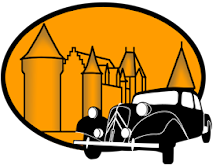Owlet moths Noctuidae are the largest moth family, robust and usually with dull, dark and / or cryptically (camouflage) patterned top wings and often brightly coloured underwings. They can be confused with
Prominent moths Notodontidae. Their forewings often have 3 obvious spots on the forewing - roundish near the mid-point, as well as a kidney shaped mark and a more elongated mark. The wings are held over the body at rest like a pitched roof, or flat and overlapping. The caterpillars are somewhat plump and rarely have much hair. Some species are serious crop pests, and known as cutworms, living in the soil. They emerge at night and chew through plants at the base, often causing damage that can be mistaken for that caused by slugs. Newly planted lettuce and brassicas are favourite targets. They are active right through the winter, except in very cold weather. Their shiny brown pupae are often dug up by gardeners.
Knotgrass Acronicta rumicis: Grey, sometimes very dark, with clear white markings, especially near the wing edges. Adults active June to September. Caterpillar is hairy and brown with red and white spots. They eat a variety of plants, from knotgrass to brambles.
 |
| Knotgrass caterpillar on bramble in the Brenne, May. |
Photographed by Loire Valley Nature:
Photographs numbered from left to right, top to bottom. 1 a typical Noctuid caterpillar.









No comments:
Post a Comment